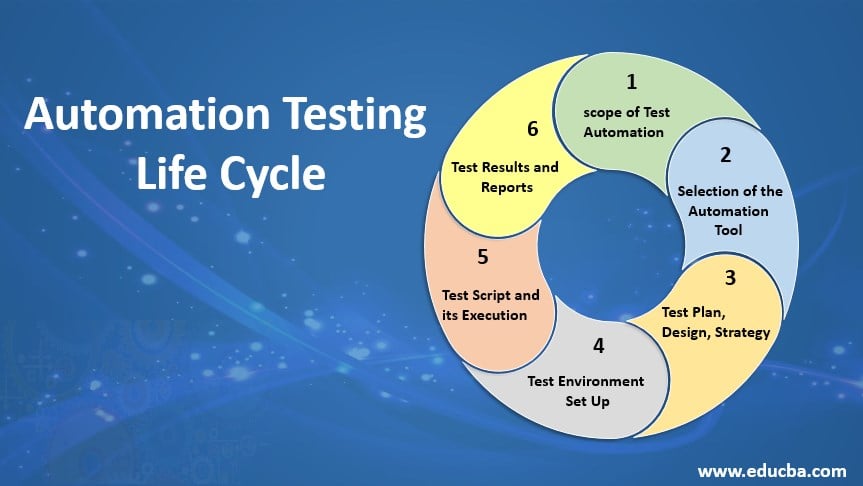From Manual to Automated Testing: A Comprehensive Overview to Transitioning Smoothly and Effectively
In the realm of software application testing, the shift from manual to automated procedures has actually come to be an increasingly vital transition for organizations seeking to enhance efficiency and accuracy in their screening techniques. As modern technology remains to development, the requirement for reliable and seamless computerized testing methods has actually never been extra important. The journey from guidebook to automated testing is not without its obstacles, but when approached purposefully and with a clear strategy in mind, the benefits can be significant - automation testing. In this thorough guide, we will check out key steps and factors to consider essential for a successful transition, from the initial selection of tools to the integration of automation right into existing operations. Keep tuned to reveal the understandings that will help lead the method for a smoother and a lot more reliable screening procedure.
Advantages of Automated Testing
Automated testing offers countless advantages, improving performance and precision in software application development processes. One primary benefit is the significant decrease in testing time. Automated examinations can be run simultaneously on numerous tools and running systems, drastically quickening the testing stage contrasted to hands-on testing. This boosted efficiency enables faster comments on the top quality of the software application, enabling programmers to determine and deal with issues without delay.
Moreover, automated screening makes sure a greater level of precision in spotting flaws. Given that automated tests follow predefined manuscripts, human mistake is decreased, causing even more reliable test results. Consistency in testing is likewise boosted, as automated tests implement the same steps precisely each time they are run. This consistency is critical in guaranteeing that all performances of the software program are completely evaluated, reducing the likelihood of undiscovered pests sliding with to manufacturing.
Choosing the Right Devices

To start with, examine your purposes and demands. Recognize the scope of your task, the modern technologies entailed, and the ability of your group. This evaluation will aid you identify the capacities and functions you require in your screening tools.
Secondly, consider the compatibility of the devices with your existing processes and systems. Smooth combination with your present software growth lifecycle is necessary to ensure a smooth shift to automation.
Furthermore, assess the scalability and versatility of the tools. As your screening requires advance, the tools ought to have the ability to adjust and suit modifications efficiently.
Last but not least, consider the support and area around the tools. Robust support and an active user neighborhood can give useful sources and help when implementing automated screening. By thoroughly considering these elements, you can select the right tools that align with your needs and established the phase for an effective change to automated testing.
Creating Reliable Examination Scripts

When crafting test scripts, it is vital to think about the specific needs of the software being tested and ensure that the scripts address all important performances. Clear and detailed naming conventions for examination manuscripts and examination situations can boost readability and maintainability. Additionally, incorporating mistake handling mechanisms within the examination scripts can aid in determining and dealing with problems promptly.
In addition, organizing examination scripts into modular parts can boost reusability and scalability, decreasing redundancy and boosting effectiveness in examination script upkeep. Normal testimonials and updates to examine manuscripts are crucial to maintain pace with progressing software needs and performances. By adhering to these concepts, testers can develop efficient and durable examination manuscripts that add considerably to the success of automated testing processes.
Integrating Automation Into Workflows
By flawlessly incorporating automated testing devices like Selenium or Appium into the software advancement lifecycle, teams can accomplish faster feedback on code changes, leading to quicker bug detection and resolution. This combination enables for constant screening throughout the growth procedure, making sure that any kind of concerns are determined early on, resulting in greater software program high quality. Correct combination of automation devices requires partnership between advancement, testing, and operations teams to develop a unified operations that optimizes efficiency and efficiency in providing high-quality software program products.
Making Certain a Smooth Transition
Effectively transitioning to automated screening entails meticulous planning and cautious implementation to optimize and decrease interruptions efficiency in the software application growth procedure - automation testing. To ensure a smooth transition, it is vital to begin by performing an extensive evaluation Visit Website of the present screening procedures and recognizing locations where automation can bring the most significant benefits. Engaging with all stakeholders early while doing so, consisting of designers, testers, and task supervisors, is crucial for gathering assistance and buy-in for the automation campaign
Interaction is key during this transition phase. Clear communication of the goals, benefits, and expectations of automated testing assists to take care of any kind of resistance or concerns that may arise. Additionally, offering appropriate training and sources for employee to upskill in automation devices and strategies is important for guaranteeing an effective shift.

Final Thought
To conclude, transitioning from manual to automated screening provides countless benefits, consisting of raised effectiveness and dependability. By picking the appropriate devices, creating effective examination manuscripts, and integrating automation flawlessly right into process, organizations can guarantee a smooth and successful shift. It is vital to embrace automation as a useful my link property in software program testing processes to enhance total quality and performance.
In the world of software screening, the change from guidebook to automated procedures has ended up being an increasingly vital shift for organizations looking for to enhance effectiveness and accuracy in their screening practices. Automated tests can be run all at once on multiple tools and running systems, substantially speeding up the testing stage contrasted to manual testing. Uniformity in screening is additionally improved, as automated tests perform the exact same steps precisely each time they are run.To make certain the successful implementation of chosen testing devices, the production of reliable test scripts plays a vital function in verifying the performance and efficiency of automated procedures - automation testing. By complying with these principles, testers can create efficient and robust test scripts that add dramatically to the success of automated screening procedures
Comments on “Effective Automation Testing: Enhancing Software Reliability and Rate”